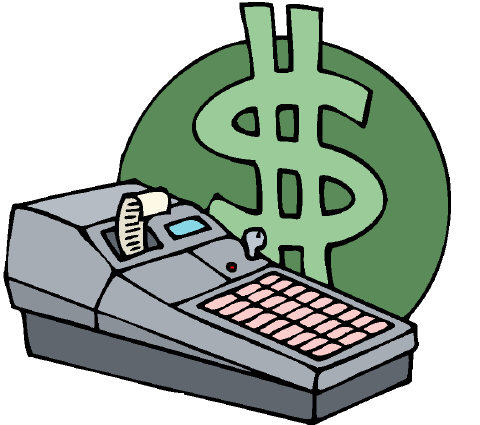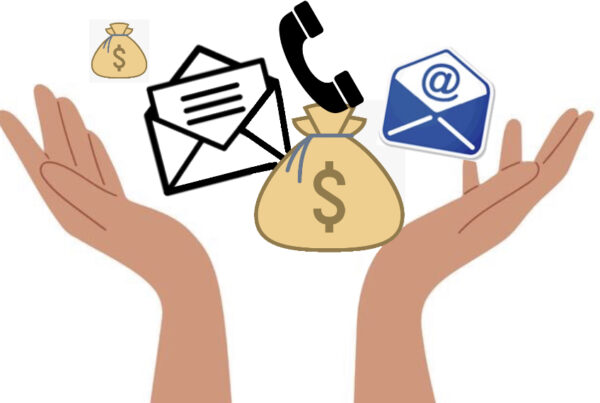In this multi-post blog series, we will outline basic ways you can build a successful fundraising strategy at your nonprofit. Be sure to check back in!
If you hope to advance your organization’s mission, you will want to pursue the right people the right way. Your goal should be to find individuals who can give you the biggest gifts, the most quickly. We call these donors “major gift” donors. They give the top 5-10% of your organizations revenue.
Here are a few ways you can find them.

Follow the money
When I work with fundraisers and executive directors to find the donors who will be most responsive to their outreach, I encourage them to look first at recent cash giving. You will often hear fundraising consultants use the acronym “RFM” – recency, frequency, and monetary amount. How recently have your donors given? If a donor has given during the last fiscal year, consider them someone who will at least pick up the phone. If the donor has given regularly for the last five years, consider them someone you will give you enough time for a productive conversation. If the donor has given gifts in the four- to five- figure range or more, and they have also given recently and frequently, consider them your very best prospects.
If your nonprofit has a record of donations, pull that information into a spreadsheet, create separate columns for each of the last five fiscal years, and see who has given you what, when. This will show you who has invested recently in your nonprofit and where you will find the best return on your investment of time.

Look for planned gift donors
There are plenty of studies, backed up by plenty of anecdotes, about the correspondence between donors who have made estate gifts and donors who can make a major gift. A planned gift is simply a gift that will be made in the future. This may be a bequest intention, a life insurance policy, a charitable gift annuity, or an individual retirement account. Assuming you have the ability in your database to locate these individuals, be sure to include these in your roster of prospects. Of course, you will use this as complementary information. Don’t assume that just because someone is a planned giving donor they will be a major gift donor. Or vice versa. But at the very least, you know that these individuals believe in your organization, and they believe in it enough to give from their estate – something usually reserved for family. Planned giving is an especially meaningful way to find the donors who truly believe in your organization. Include these donors in your list of top individuals.

Largest gift
The donor who made one large gift five years ago but who has not given since should not be excluded from your list of prospects. In fact, some studies show that donors who give sporadic but large gifts can be your very best potential major gift donors. The leading donor database systems will have this information readily available. But if you are not using one of them you will need to get creative in pinpointing that particular piece of data. Create a spreadsheet like the one I mentioned above. But add a column for “largest gift.” You can supplement with “largest gift date” to see if the donation was recent enough to still fall within the donation statute of limitations. Maybe you’ll add another five donors to your roster of prospects. That’s a great start. It means that these donors gave large donations to qualify as major gifts and there is always the potential that they could do more.

Anyone who previously made a pledge
Again – assuming you have the capability to do so – include donors those who have made pledges in the past in your roster of prospects. These will be individuals whose relationship with your nonprofit was sufficient enough to warrant a multi-year commitment. As with all of these criteria, you will want to use them in a complementary way. There is not one factor that guarantees a donor will respond to your outreach. But, taken together, and if you generate enough outreach activity, you will eventually find donors who want to be found.

Total giving
Total giving can be a sign of sustained support, and you may indeed find a major gift donor by attending to it, but as with the other criteria in this list, cumulative giving should be considered a complement to other criteria. Attend first and foremost to donors who have given you the most, the most recently. Complement this information with total giving. And be careful not to assume total giving is a direct indicator of major gift potential. Donors’ giving patterns reflect their financial philosophy.
Anyone with an open proposal or previously assigned to a fundraiser
If you are new to an organization, you can often get good intel on the history of donor relationships by looking into the portfolios of previous fundraisers. It is no secret that there is a lot of turnover in the major gift officer job network. You will often hear fundraisers refer to the average tenure of a gift officer being eighteen months. Taking a look at those previously assigned prospects will help you know which relationships should be continued, or which ones were dropped.

Research-based information
Once you have performed your due diligence scouring your database for information that should already be at your fingertips, you can supplement that information with research found through external assistance. If you hope to engage new or newly acquired donors, you will need to invest a lot of time. Moving a donor from minimally engaged or non-engaged to the point where they are ready for an ask requires a lengthy period of cultivation. So begin with some due diligence – fully exploring the information you already have. Once you have done so, you can turn to externally available research to find donors with major gift capacity.
Depending on the package you purchase, external vendors can use a variety of publicly available factors to determine donor wealth. Property value, political donations, wealth indicators, memberships in clubs or wealth-reliant organizations – these are all factors that you can use to create various wealth rating indicators. You should also be on the lookout for donors who give through foundations, trusts, Individual Retirement Accounts, stock brokers, or donor advised funds.
There is much more that could be said about research-based information, and much has already been said. For our purposes, make note that, as you are in the process of locating your most promising donors – seeing the right people the right way – you will want to supplement the easily accessible information you already have in your database with externally available, research-based information.
Want to learn more? Schedule a free 30-minute consultation here with our founder William Myatt.



